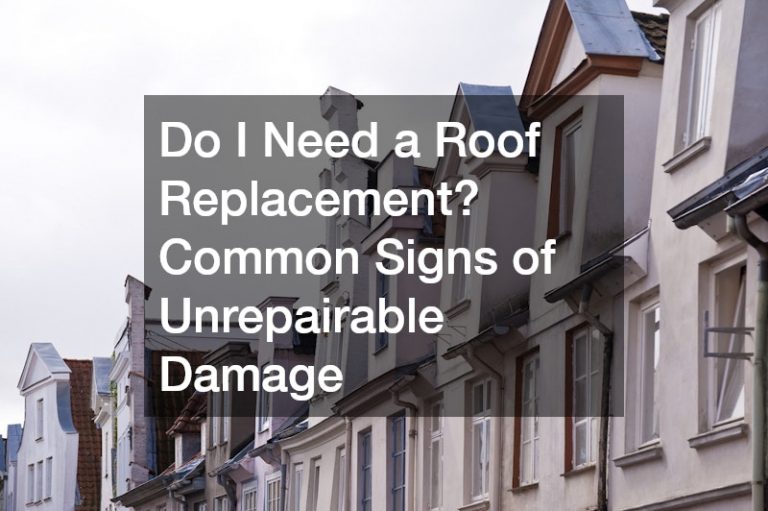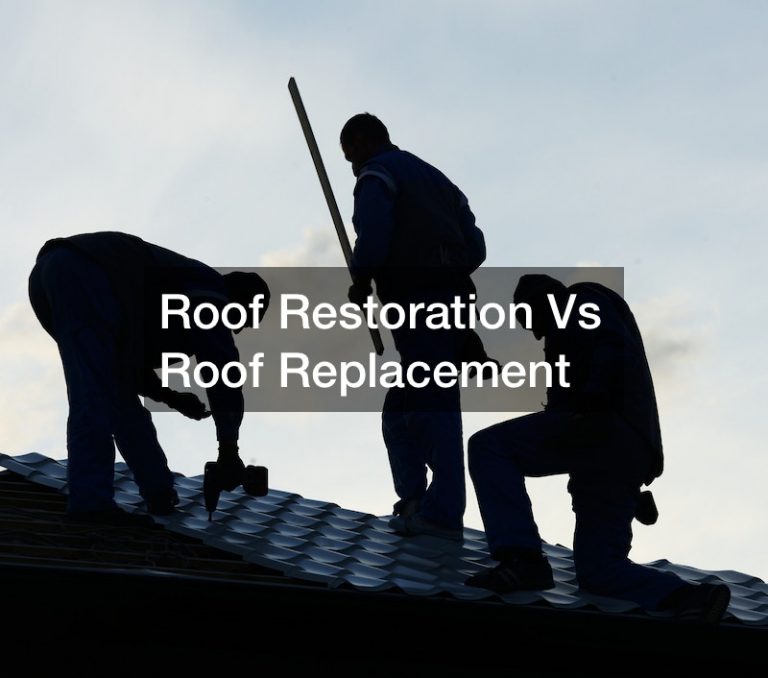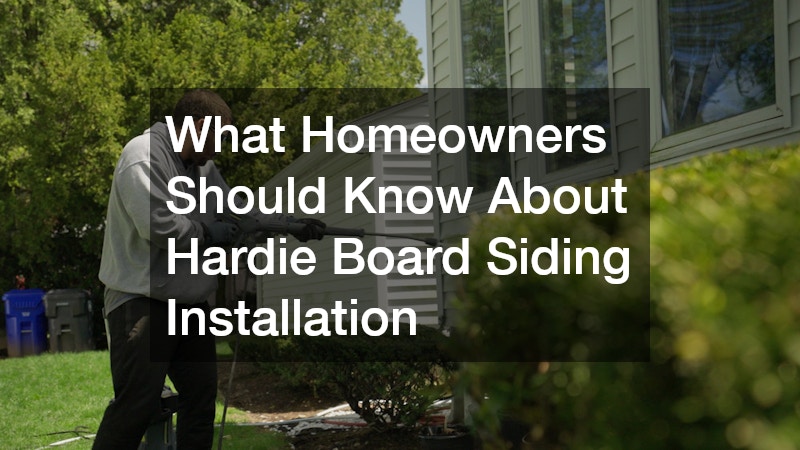

- Hardie Board siding is durable, low-maintenance, and enhances home curb appeal.
- Proper installation by Hardie Preferred pros ensures warranty coverage and long-term performance.
- Pre-installation planning, including permits and contractor selection, is essential for a smooth project.
- Routine maintenance, such as cleaning and inspections, preserves appearance and prevents damage.
- Avoid common installation mistakes like misalignment, improper nailing, and skipping moisture barriers.
- Choosing the right style, texture, and trim options ensures a cohesive and aesthetically pleasing exterior.
- Investing in certified professionals minimizes costly errors and maximizes the lifespan of your siding.
Introduction: Why Hiring Hardie Preferred Pros Matters
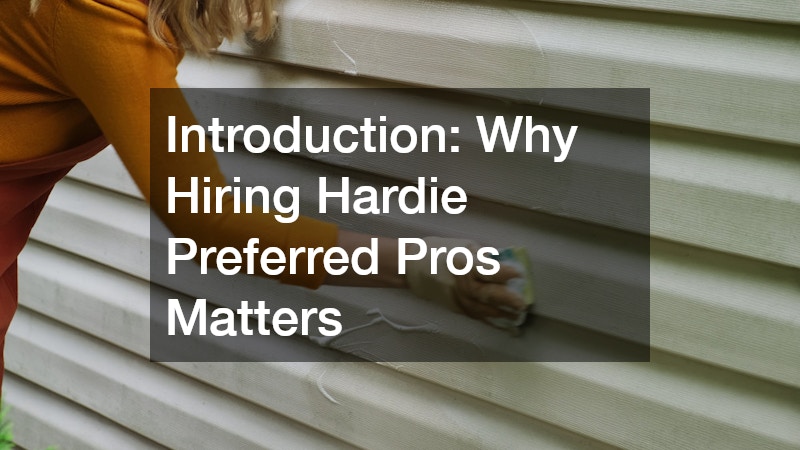
When it comes to enhancing your home’s curb appeal and ensuring long-lasting protection, few exterior upgrades match the durability and beauty of Hardie Board siding. Fiber cement siding is praised for its resistance to rot, pests, and extreme weather, making it a popular choice for homeowners seeking both aesthetic and functional benefits. However, the quality of installation can make or break the performance of your siding.
For homeowners who want flawless results, it’s essential to hire experienced professionals. If you need residential roofing contractors who are Hardie Preferred pros for siding and trim, you’re already on the right path. These certified specialists have the training and experience necessary to handle the complexities of Hardie Board siding installation, from proper cutting techniques to moisture barrier placement. By choosing a Hardie Preferred pro, you’re ensuring your investment delivers long-term durability, a clean finish, and compliance with manufacturer warranties.
In this guide, we’ll explore everything homeowners need to know about Hardie Board siding installation: from understanding the material, preparing your home, selecting the right contractor, to step-by-step installation guidance and maintenance tips.
Understanding Hardie Board Siding
What is Hardie Board?
Hardie Board, also known as fiber cement siding, is a high-performance composite material made from cement, sand, and cellulose fibers. This unique combination delivers a siding product that is exceptionally strong, fire-resistant, and able to withstand extreme weather conditions, including heavy rain, hail, and strong winds. Unlike traditional wood siding, which can rot, warp, or attract pests, or vinyl siding, which may crack or fade over time, Hardie Board offers long-lasting durability with minimal maintenance requirements.
Hardie Board has become a popular choice for homeowners who want a combination of beauty, resilience, and longevity. Its versatility allows it to suit a wide range of architectural styles—from classic colonial homes to modern urban designs—while providing superior protection for your home’s exterior.
Types of Hardie Board Siding
Hardie Board comes in several forms, each designed to enhance both the aesthetic and functional appeal of your home:
- Lap Siding: Horizontal boards that provide a timeless, classic appearance. Ideal for traditional homes, lap siding creates clean lines and a visually appealing exterior.
- Shingle Siding: Adds texture and charm, perfect for craftsman-style cottages or homes seeking a rustic or handcrafted look. Shingle siding gives depth and dimension to your exterior.
- Panel Siding: Wide boards that deliver a sleek, contemporary look. Panel siding is often chosen for modern homes or renovations where a minimalist style is desired.
- Trim and Fascia: These finishing components are essential for completing the exterior. Properly installed trim ensures clean edges around windows, doors, and corners, enhancing curb appeal and protecting your home from water intrusion.
Benefits of Hardie Board Siding
Hardie Board siding offers a combination of functional and aesthetic advantages that make it a top choice for homeowners:
- Durability: Resistant to rot, fire, mold, and insect damage, Hardie Board is engineered to withstand the elements and maintain its appearance over decades.
- Low Maintenance: Unlike wood siding, Hardie Board does not require frequent repainting or treatments. Occasional cleaning and inspection are usually sufficient to keep it looking fresh.
- Longevity: With proper installation and care, Hardie Board siding can last 30–50 years or more, making it a wise long-term investment for your home.
- Aesthetic Flexibility: Available in multiple textures, colors, and styles, Hardie Board can be customized to match your home’s architectural design, whether traditional, modern, or eclectic.
Popular Styles and Finishes
Hardie Board siding offers homeowners additional options to enhance the exterior beauty of their home:
- ColorPlus® Technology: This factory-applied, fade-resistant paint finish ensures vibrant, long-lasting color with minimal upkeep. Available in a wide palette of shades, it eliminates the need for frequent on-site painting.
- Textured Options: Choose from smooth finishes, cedar textures, or shingle patterns to complement your home’s design. These textures can add depth, character, and authenticity to your exterior.
- Custom Trim: Hardie Board trim pieces enhance windows, doors, corners, and rooflines, creating a polished, professional look. Trim also reinforces protection against water infiltration, preventing future damage.
Additional Advantages
Beyond durability and aesthetics, Hardie Board siding offers homeowners practical advantages:
- Weather Resistance: Hardie Board performs exceptionally well in harsh climates, including high humidity, heavy rainfall, snow, or intense sunlight.
- Eco-Friendly Option: Fiber cement siding is made from sustainable materials and can reduce the need for frequent replacements, contributing to environmental sustainability.
- Increased Home Value: Its premium appearance, durability, and low maintenance make Hardie Board an attractive selling point, enhancing curb appeal and property value.
- Warranty Support: When installed by Hardie Preferred pros, Hardie Board comes with comprehensive manufacturer warranties, protecting your investment.
Pre-Installation Considerations
Assessing Your Home’s Needs
Before installation, assess your home’s exterior:
- Inspect current siding for rot or damage.
- Evaluate underlying structural integrity.
- Consider your climate and environmental exposure (humidity, sun, wind).
Budgeting for Hardie Board Siding
Installing Hardie Board siding is an investment. Costs vary based on:
- Material type (lap, panel, shingle).
- Square footage of your home.
- Labor and contractor fees.
- Additional features such as trim, soffits, or insulation.
Cost Comparison: While fiber cement can be more expensive than vinyl, its longevity, durability, and low maintenance provide excellent ROI.
Choosing the Right Contractor
Hiring certified professionals is crucial:
- Hardie Preferred Pros: Contractors trained and certified in proper Hardie siding installation.
- Verify experience, licenses, and references.
- Ensure the contractor is familiar with local building codes and HOA requirements.
Permit Requirements
- Local jurisdictions may require permits for siding replacement.
- Confirm inspections and approvals are part of your project plan.
Tools and Materials Required for Installation
A successful Hardie Board installation requires the right tools and materials.
Essential Tools:
- Circular saws with carbide-tipped blades.
- Nail guns and corrosion-resistant fasteners.
- Chalk lines, levels, and measuring tools.
- Ladders and scaffolding for multi-story homes.
Materials Checklist:
- Hardie Board siding and trim.
- Weather-resistant barriers.
- Caulking, flashing, and sealants.
- Protective gear: masks, goggles, gloves.
Safety Considerations: Always follow manufacturer guidelines and OSHA safety regulations, especially when cutting fiber cement, which generates dust.
Step-by-Step Hardie Board Siding Installation
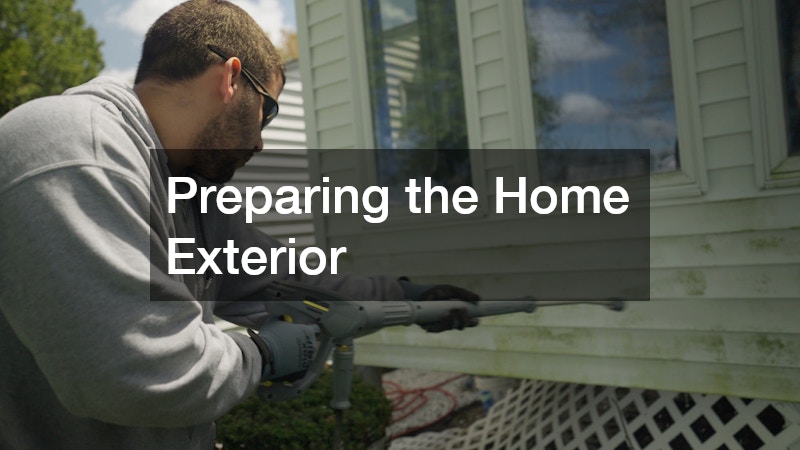
1. Preparing the Home Exterior
- Remove old siding carefully to avoid damaging walls or insulation.
- Repair any structural issues, including rot or mold.
- Install weather-resistant barriers to prevent moisture penetration.
2. Measuring and Planning Layout
- Plan board placement to minimize waste and ensure proper overlap.
- Mark reference lines for alignment and level installation.
- Account for windows, doors, corners, and other architectural features.
3. Cutting and Installing Boards
- Cut boards using a saw with a carbide-tipped blade to prevent chipping.
- Nail boards according to manufacturer guidelines, allowing space for expansion.
- Stagger seams to improve structural integrity and aesthetics.
4. Installing Trim and Accessories
- Add corner boards, window trim, fascia, and soffits.
- Ensure trim pieces are aligned and securely fastened.
- Seal edges and joints to prevent water intrusion.
5. Sealing, Caulking, and Finishing
- Use high-quality caulk around windows, doors, and corners.
- Touch up paint if necessary, particularly if boards were cut on-site.
- Inspect the entire exterior for gaps or misaligned boards.
Common Installation Mistakes to Avoid
- Misaligned boards or uneven spacing.
- Improper nailing, leading to warping or cracking.
- Skipping the moisture barrier or improper flashing installation.
- Failing to use Hardie Preferred pros, risking warranty voidance.
- Neglecting trim and sealing, leading to water damage.
Maintaining Hardie Board Siding
Routine Maintenance
- Clean annually with a garden hose or mild detergent.
- Inspect for cracks, chips, or loose boards.
- Check caulking around windows, doors, and corners.
Repairing Minor Damage
- Replace damaged boards promptly to prevent moisture intrusion.
- Re-caulk or repaint areas exposed during cutting or repair.
Long-Term Care Tips
- Avoid high-pressure washing that can damage the surface.
- Trim landscaping and maintain gutters to prevent water damage.
- Schedule inspections every few years for preventative care.
Cost Considerations and ROI
Installation Cost Breakdown
- Materials: Hardie Board siding averages $7–$12 per square foot.
- Labor: Installation by Hardie Preferred pros averages $5–$10 per square foot.
- Additional Costs: Trim, flashing, and permits.
Long-Term Value
- Reduced maintenance costs compared to wood or vinyl siding.
- Enhanced home curb appeal can increase resale value.
- Manufacturer warranty ensures peace of mind for decades.
Environmental and Energy Benefits
- Hardie Board is fire-resistant and durable against extreme weather.
- Compatible with insulation systems to improve energy efficiency.
- Long lifespan reduces waste and environmental impact compared to short-lived siding materials.
Questions to Ask Your Contractor
- Are you a Hardie Preferred pro?
- How many Hardie Board installations have you completed?
- Can you provide references and before-and-after photos?
- What is the expected timeline for my project?
- How do you handle warranty and post-installation support?
Conclusion
Hardie Board siding is a smart investment for homeowners seeking durability, aesthetics, and low maintenance. Proper installation is essential to protect your home and maximize the product’s lifespan. If you need residential roofing contractors who are Hardie Preferred pros for siding and trim, hiring certified experts ensures professional results, compliance with warranty requirements, and long-term satisfaction.
By understanding the material, preparing your home, and working with qualified professionals, you can enjoy a beautiful, resilient exterior that enhances your property’s value and protects it from the elements for decades. Additionally, choosing Hardie Preferred pros reduces the risk of costly mistakes, ensures proper handling of trims, corners, and flashing, and guarantees that your siding performs optimally in all weather conditions. Regular inspections and maintenance further extend the life of your investment, keeping your home looking polished and protected for years to come.
Additional Resources:
-
James Hardie Official Site – Guides, installation tips, and contractor locator.
-
National Association of Home Builders (NAHB) – Resources on siding installation, permits, and contractor best practices.
Key Takeaways
- Hardie Board siding offers unmatched durability, low maintenance, and aesthetic versatility.
- Hiring Hardie Preferred pros ensures proper installation and warranty coverage.
- Pre-installation planning, correct materials, and permits are critical to a successful project.
- Routine maintenance and inspections extend the lifespan and maintain appearance.
- Avoid common mistakes by using certified contractors and following manufacturer guidelines.
